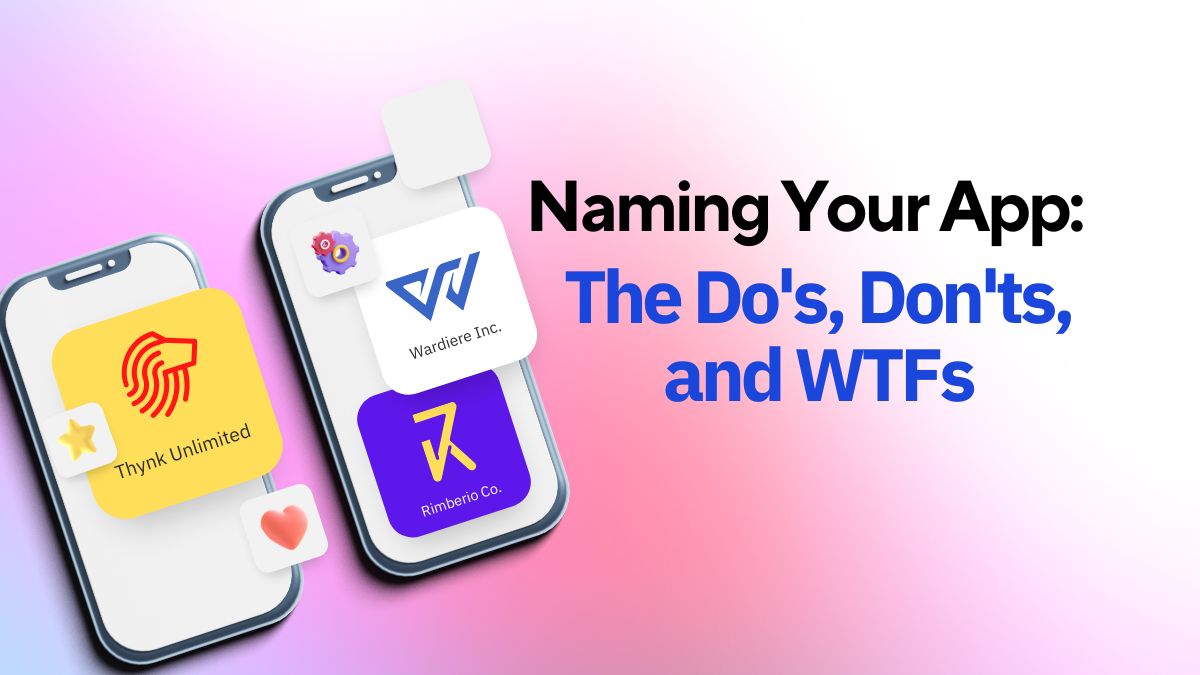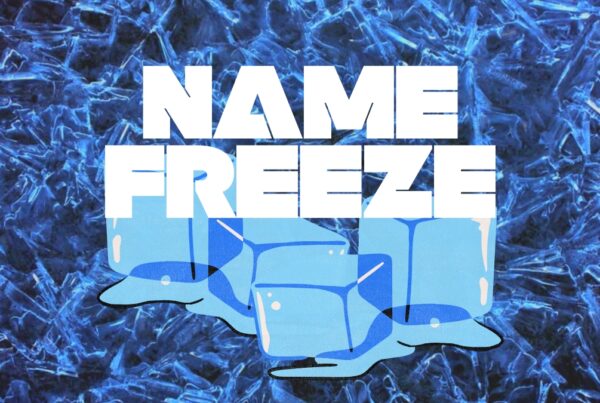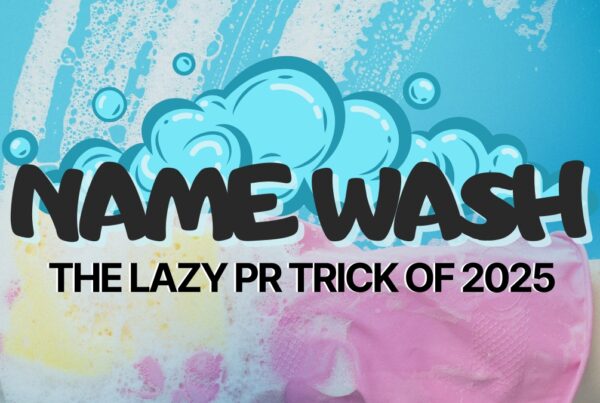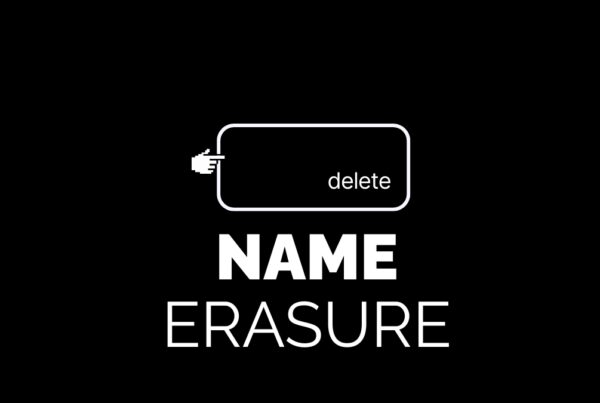Why Naming Your App Still Matters (Yes, Even in 2025)
Apps live on your home screen. They live in your search history. They live in your conversations. A catchy name attracts someone to tap. Before it is downloaded, a bad name is removed. This is why it is still important.
However, the majority of people don’t give it much thought. They overthink every word or attempt to be quick or smart. App naming isn’t a poetic attempt. It all comes down to memorability, clarity and avoiding making your user work too hard.
Let’s go over the Dos, Don’ts, and occasionally WTFs of app naming in 2025.
The Do’s
1. Keep It Short
Short names make it simple to type, say, and remember. Your name should ideally contain no more than 12 characters. This means that it can be found in a person’s brain, on a symbol, and in a text message.
Because they’re brief, names like Lyft, Calm, Venmo, and Duolingo work. They don’t occupy mental real estate.
2. Make It Easy to Spell
You want someone to be able to locate you after hearing your name once. You’ve already lost if they have to ask you how to spell it.
Unless they are extremely intuitive (like Fiverr), stay away from strange letter swaps. Avoid using punctuation, silent letters, and complex compound words.
3. Make It Easy to Say
Say the name aloud. Repeat it. Have a friend say it. Fix it if it seems uncomfortable or clumsy.
Something that is easy to say is what you want. Something suitable for a dialogue. Something that seems appropriate for someone’s everyday life.
4. Think About What It Sounds Like
This seems obvious, but it’s often skipped. Say your name aloud once more. What rhymes with it? Does it have a negative sound? In a different language? With a different accent?
Things move quickly online, even if the majority of your audience is in a single nation. Be careful that your name doesn’t unintentionally become well-known for the wrong reasons.
5. Check for URL and App Store Availability
A name isn’t useful if you can’t use it.
Before you fall in love with a name, do a quick check:
- Is the .com or a solid domain available?
- Is the name available in the iOS and Android app stores?
- Is someone else already using it for a related product?
If you’re serious about launching, it’s worth spending a few dollars on a domain and securing social handles too.
6. Consider Future Growth
Names like Airbnb, Uber, and Instagram didn’t limit themselves to a single purpose. Your app may begin with a particular set of features, but it may expand over time. Select a name that allows for future growth.
A name like “RunTracker2024” limits you. A name like “Stride” gives you space to grow from running to overall health or fitness.
7. Make Sure It Works Internationally (If You Plan to Scale)
Consider how your name reads and sounds in various languages or cultures, even if you’re starting locally. Steer clear of confusing translations, offensive interpretations, and unintentional implications.
Tools like Namechk, Google Translate, and Urban Dictionary can help you catch problems early.
The Don’ts
1. Don’t Try Too Hard to Be Clever
Although clever names give the developer a sense of intelligence, users frequently find them confusing.
It’s not working if you have to explain your name.
You don’t need to be boring. But in every case, clarity wins over cleverness. “Headspace” is obvious. “Föccüs” isn’t.
2. Don’t Use Random Words Mashed Together
This was cool in 2011. Now it just looks like a typo.
Mashup names only work if they make sense and are readable. Netflix (net + flicks) works. TrndR or Smplfi or whatever else you’re thinking of? Probably not.
3. Don’t Steal Someone Else’s Name
Obvious, but worth repeating. Do a quick trademark search. Check the app stores. Search social media handles.
The last thing you want is a cease-and-desist letter two months after launch.
4. Don’t Go Full Buzzword
Avoid names that rely on trend words unless they’re central to your product.
Names with “AI” in them are everywhere right now. So are “crypto,” “block,” “cloud,” and “chat.” If those words help explain your product, fine. But don’t lean on them as a crutch.
Your app name should work even after the trend dies down.
5. Don’t Use Numbers or Hyphens (Unless There’s a Good Reason)
Numbers and hyphens make names harder to say, spell, and remember. They also complicate SEO and branding.
If your app’s name is taken and you’re tempted to add a “2” or a hyphen, pick a new name instead.
6. Don’t Let the Committee Name It
Naming by committee almost always leads to the safest, blandest choice. Something like “Task Manager Pro” or “Project Buddy 365.”
Good names come from small teams, usually one or two people with a clear vision. Get feedback, but don’t let too many cooks in the kitchen.
7. Don’t Overuse All Caps, Underscores, or Punctuation
These won’t make your name more memorable. They’ll just make it look messy. You want people to type it once and get it right.
Avoid things like “App_Name!” or “GETTHISAPPNOW.” These don’t help. They just look spammy.
The WTFs (And Why You Should Learn From Them)
There are app names out there that defy logic. And sometimes they still work.
The Don’ts: What to Avoid When Naming Your App
1. Don’t Overcomplicate It
Cleverness and confusion are two different things. In the event that someone must ask, “Wait, how do you spell it?or “What exactly does that mean?then you’re not benefiting from it. Names that contain strange symbols, mashups that are difficult to pronounce, or numerals in place of letters are dangerous.
You may believe that you are making a statement, but in reality, you are causing conflict. Keep in mind that if people can’t recall your name, they won’t type it.
2. Don’t Copy What’s Already Out There
Following the success of well-known apps can be appealing, especially when trends arise. However, calling your AI tool “ChatGenie” or your note-taking app “Notionette” doesn’t create confidence. It shouts “clone.”
Sounding too much like an established product, even if unintentionally, can make you appear to be an off-brand version. Even worse, you can get lost in search results or face legal issues.
3. Don’t Go Too Generic
“TaskApp.” “PhotoShare.” “NoteTool.”
Yes, these names describe the functions of the software, but they also sound like any other product available. Generic names provide users with nothing important, tough to rank with in search, and offer nothing memorable for users.
Descriptive is acceptable. Bland isn’t.
4. Don’t Ignore Pronunciation and Readability
People will treat your name as a typo if it appears to be one. With the growing popularity of voice searches and word-of-mouth advertising, app names should sound appealing when spoken aloud.
Spend a moment saying the name aloud. Tell someone else. Take a look at their face. You might have an issue if they pause or frown.
5. Don’t Forget the Global Factor
Verify the meaning of your name in different languages if you want to connect with people from countries other than your own. Something that sounds catchy in English could be embarrassing, unpleasant, or ridiculous in another language.
You don’t have to have a name that is appropriate for every language, but you also don’t want it to become incredibly popular on Reddit in other countries for the wrong reasons.
The WTFs: Weird Naming Trends That Somehow Work
Now that we’ve covered the smart and not-so-smart ways to name your app, let’s take a detour into the weird world of names that break every rule but still win. These are the names that make you say, “Why does that even work?” but then you realize… people remember them.
1. Misspelled Words That Somehow Stick
Flickr. Tumblr. Reddit. Lyft.
Spelling and grammar are ruined by these apps, but guess what? They continue to exist. The important thing to remember is that they all came out at a time when unusual spelling was hip and trendy. If your name is sufficiently original and sounds natural when spoken out loud, this strategy still works today.
Just don’t do it just to be “startup-y.” You’ve gone too far if the name sounds like your cat walked across the keyboard.
2. Totally Abstract Names That Mean Nothing
Ever heard of “Quibi”? It didn’t make it, but the name was memorable. Then there’s “Spotify,” which means nothing until it means everything.
Names don’t always have to have any significance. All they have to do is feel something. To teach people what your name implies, this approach requires self-assurance, strong branding, and typically a large spending.
Make sure your tone, messaging, and images have more impact if you choose to go abstract. If not, your name simply disappears into thin air.
3. Real Words That Got Hijacked
“Apple” doesn’t sell fruit. “Slack” is a work tool. “Robinhood” is a finance app.
Giving an existing word a new meaning can be a power move. These names are effective because they are simple to say and remember, and they immediately cause a feeling, even if it has nothing to do with the product.
Just be cautious: until your app becomes really popular, short, common words are difficult to rank for and extremely harder to trademark. You and the dictionary are in competition.
4. Whimsical Nonsense That Gets Stuck in Your Head
Sometimes a name is just fun. Think: “Zelle,” “Bebo,” “Waze,” “Venmo.” These sound like characters in a kids’ book, but they’re real products used by millions.
If your app is playful, social, or consumer-focused, don’t be afraid of something a little weird. Just make sure people can spell it after hearing it once.
5. Over-the-Top Acronyms and Mashups
Acronyms can be stiff, but if they’re punchy (like Zoom or NASA), they work. Mashups, smashing two words together can also land if the result doesn’t sound forced. Think “Instagram” (instant + telegram) or “Snapchat.”
But please, don’t force a Frankenstein creation like “TradrLyfX” and expect users to love it.
Testing the Name Before You Regret It
Creating a catchy name is just half the work. The actual test? Seeing how it holds up in the wild. You should take a few easy yet crucial measures to gut-check your app name before spending money on logos, domains, or legal filings.
1. Say It Out Loud. A Lot.
You’re going to be saying this name for the next few years. So say it out loud in different situations:
- “Hey, have you downloaded [Name]?”
- “We’re building an app called [Name].”
- “You can find us on the App Store, just search [Name].”
If it sounds awkward or you keep having to repeat yourself, that’s a problem. Your name should feel natural, not like you’re explaining an inside joke.
2. Spell Test: Can People Write It Down Right Away?
After hearing the name once, ask a friend to spell it. You need a more straightforward name or a more accurate pronunciation if they butcher it. This is particularly crucial if you’re employing stylized language, foreign words, or invented words.
Bonus test: can your grandma spell it? If yes, you’re in a good spot.
3. Searchability: Can You Find It Without Digging?
Google the name you want for your app. In the App Store, type it. Verify the availability of the domain. It will be difficult to gain awareness if your app name is hidden under thirty pages of irrelevant content or if the.com is controlled by a Zurich-based holding firm.
Pro tip: tools like Namecheckr or BrandBucket can give you an overview of domain + social handle availability in one go.
4. Association Check: What Else Does It Mean?
Even though your name sounds fantastic, could it have a questionable meaning in another language? Even worse, does it appear in the Urban Dictionary with a definition you would prefer not to be connected to your company?
Run a quick check across languages, slang, and even emojis. Avoid surprises after launch.
5. Real People Feedback
Don’t ask your most supportive friend or your tech-nerd cofounder. Ask regular humans. Give them 2 or 3 options and ask:
- Which one sounds most trustworthy?
- Which one feels like a real app?
- Which would you remember a week from now?
You’re not looking for unanimous love. You’re looking for clarity, confidence, and no red flags.
6. Competitor Proximity
Don’t choose a name that’s one letter off from a major app. If there’s already an app called “Driftly,” don’t go with “Driftr.” You’re not being clever, you’re being confusing.
Instead, aim for contrast. Your name should stand out in your niche, not blend in.
Final Tips Before You Commit
You’re almost there. Here are a few parting rules to keep your app name from becoming your biggest regret:
- Check for Trademarks: Do not skip this. Even small apps can get legal heat if they step on IP.
- Say No to Copycat Energy: Resist the urge to riff off the biggest app in your space. You’re not “Slackr” or “TikChat.” Be original.
- Make Sure It Can Grow: Today you’re a journaling app. Tomorrow you might be a full mental health suite. Pick a name that gives you space to evolve.
- Check the Acronym: If your app is called “Social Tracking Assistant Tool,” do not be surprised when people call it “STAT” or worse. Say it out loud and triple-check it.
Closing Thoughts
Naming your app is part science, part instinct, part “why-is-this-so-hard.” It’s a single word or phrase that represents your history, your billboard, your brand handle, your app store identity, and your first impression.
Take your time. Avoid overanalyzing it. Additionally, don’t accept something that you won’t be able to wear with pride for a few years.
A memorable name doesn’t just happen. It sells. It gives off a signal. It earns its place.
So go find yours and make it something people want to say, share, and tap.
Curious how top names are crafted today? AI is quietly becoming the creative partner behind brand identities, using data-driven insights to generate names that resonate and perform. Dive into our next article, The AI Behind Your Next Company Name, and see how artificial intelligence is changing the naming game for good.




